1. Inland Taipan (Oxyuranus microlepidotus)
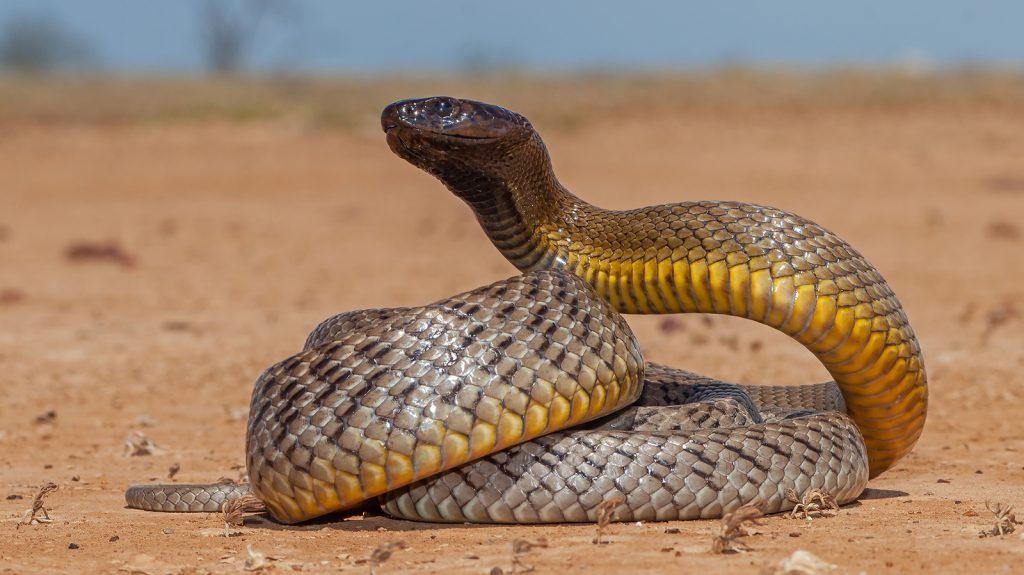
Common Name: Fierce Snake
Location: Australia
The Inland Taipan holds the title for the most venomous snake in the world. Its venom is estimated to be 50 times more toxic than that of the Indian cobra. A single bite can deliver enough venom to kill several humans, though the snake is very reclusive and rarely encountered in the wild. The Inland Taipan’s venom is a potent mixture of neurotoxins, hemotoxins, and myotoxins, which can cause paralysis, organ failure, and death if untreated. Despite its toxicity, it is not considered a major threat to humans due to its isolated habitat.
2. Coastal Taipan (Oxyuranus scutellatus)
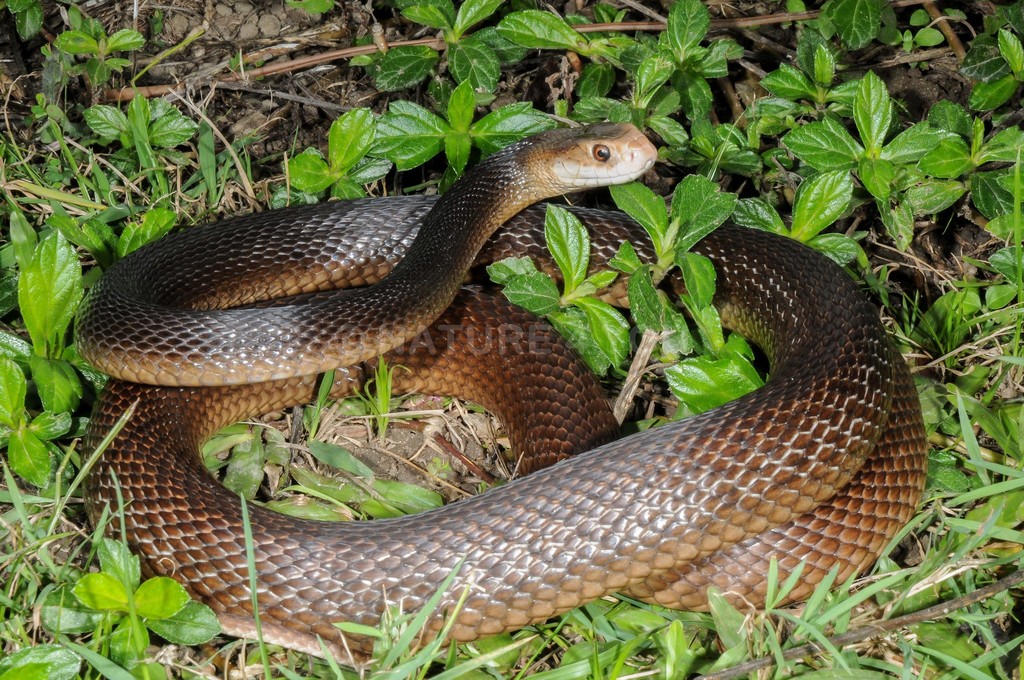
Common Name: Northern Taipan
Location: Australia and New Guinea
The Coastal Taipan is the second most venomous snake in the world. While slightly less toxic than its inland cousin, it is still incredibly dangerous. This snake’s venom contains powerful neurotoxins, which affect the nervous system, causing paralysis. A bite can lead to death within hours if not treated. Coastal Taipans are more aggressive than Inland Taipans and are found in coastal regions of northern Australia and parts of New Guinea.
3. Black Mamba (Dendroaspis polylepis)
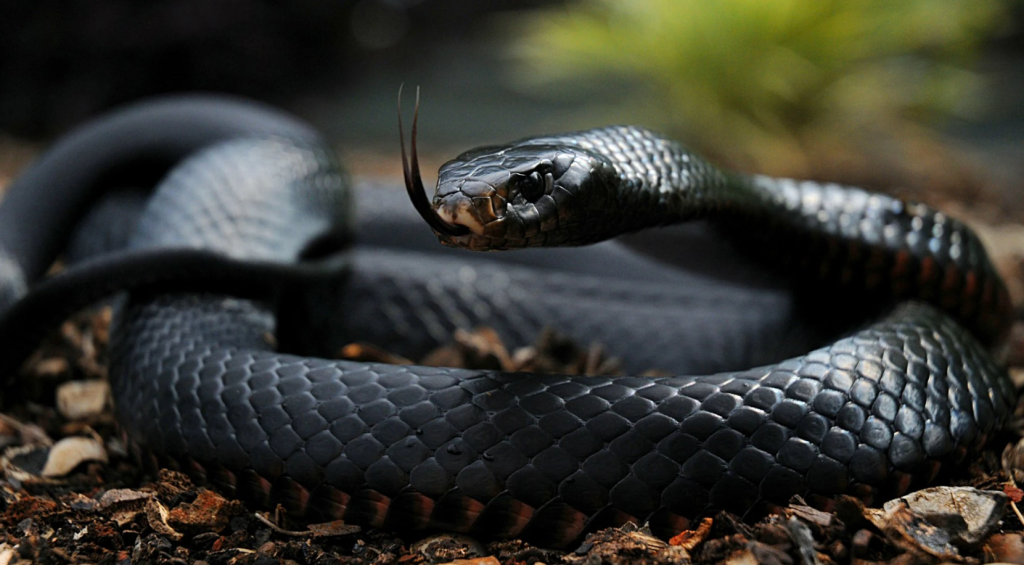
Location: Sub-Saharan Africa
The Black Mamba is known for both its speed and the potency of its venom. It can travel at speeds of up to 12 mph (20 km/h) and strike with incredible accuracy. Its venom is a potent neurotoxin, capable of causing death within hours if not treated with antivenom. Black Mambas are shy creatures and avoid humans, but their aggressive defense mechanism when threatened makes them particularly dangerous. With a bite, the venom can quickly paralyze the victim’s respiratory muscles, leading to suffocation.
4. King Cobra (Ophiophagus hannah)
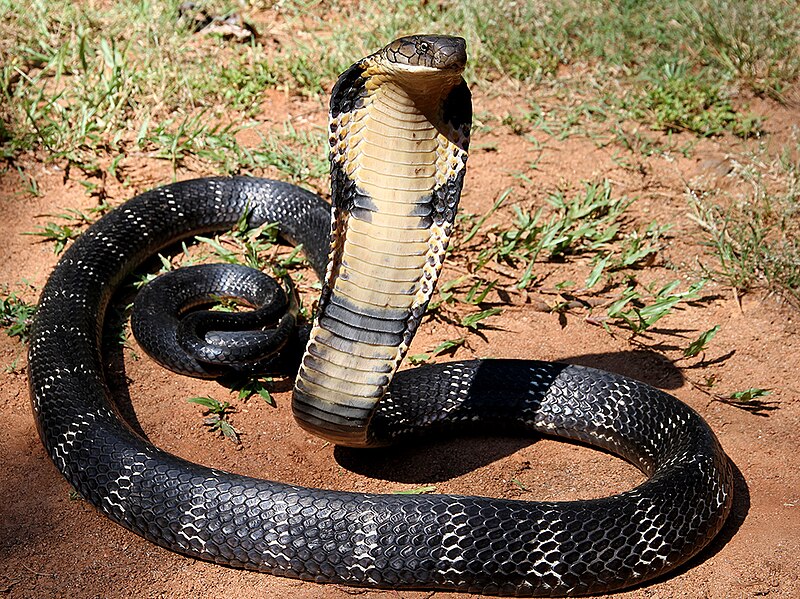
Location: Southeast Asia and India
The King Cobra is the longest venomous snake in the world, reaching lengths of up to 18 feet (5.5 meters). Its venom is not as toxic on a per-bite basis as that of the Inland Taipan, but it can deliver a significant amount of venom, enough to kill an elephant. The venom of the King Cobra is neurotoxic, causing paralysis and death through respiratory failure. This snake is revered in many cultures, but its large size, speed, and potent venom make it extremely dangerous.
5. Philippine Cobra (Naja philippinensis)
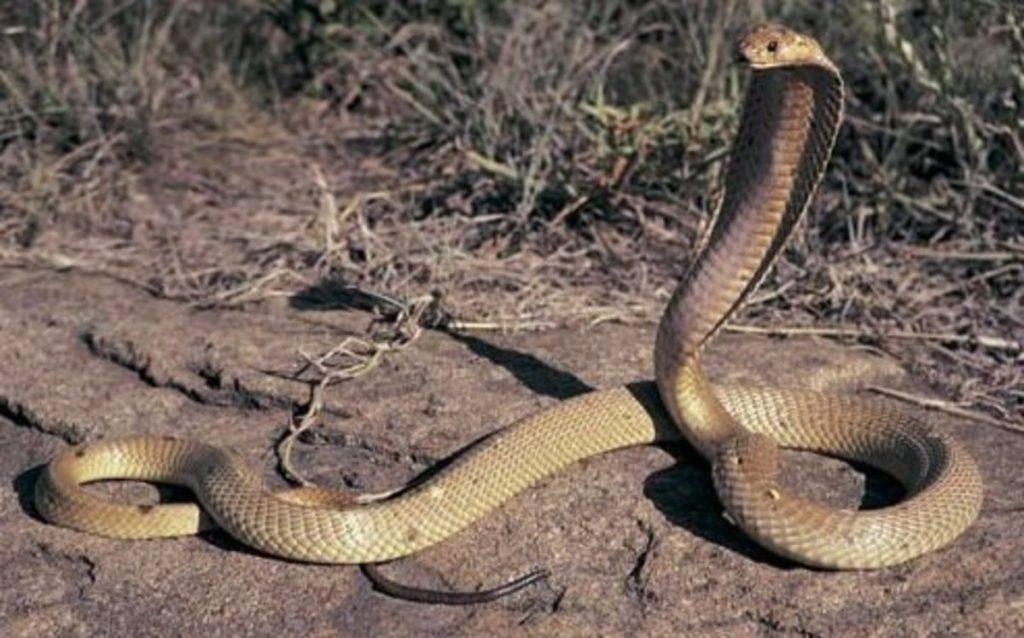
Location: Philippines
The Philippine Cobra is known for its highly toxic venom, which is a potent neurotoxin. This snake is capable of spitting venom at a target from a distance, and a single bite can cause paralysis, respiratory failure, and death within hours. The Philippine Cobra is typically found in the northern regions of the Philippines, where it preys on rodents and small mammals. While its venom is not the deadliest in terms of quantity, the speed at which it can cause death makes it one of the most dangerous.
6. Brown Snake (Pseudonaja spp.)
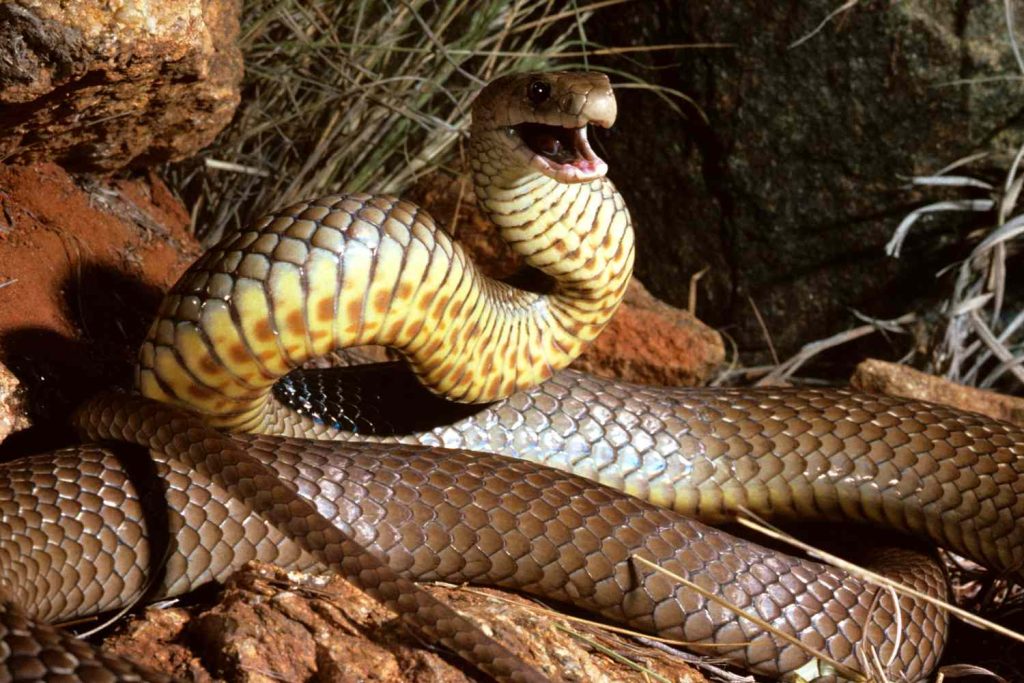
Common Name: Eastern Brown Snake
Location: Australia
The Brown Snake is considered one of the most dangerous snakes in Australia. It has highly toxic venom that affects the victim’s nervous system and blood, leading to organ failure and death. The venom is a mix of neurotoxins and anticoagulants, which can cause paralysis, blood clotting, and eventually death if untreated. The Eastern Brown Snake is often encountered in urban areas, which increases the risk of human interaction. Its aggression and quick strikes make it a highly dangerous species.
7. Black-Necked Spitting Cobra (Naja nigricollis)
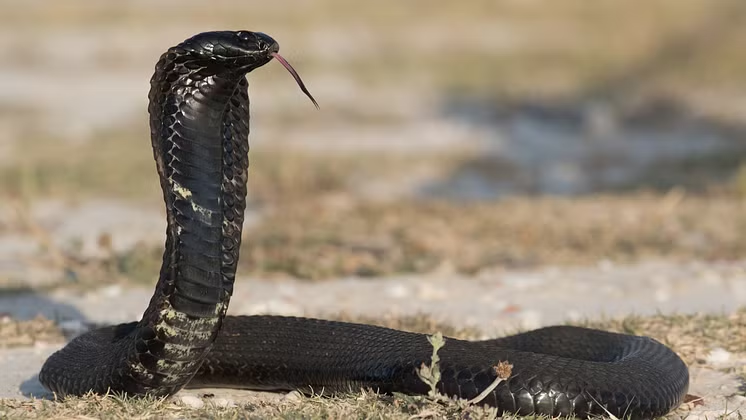
Location: Sub-Saharan Africa
The Black-Necked Spitting Cobra is capable of spitting venom up to 3 meters (10 feet), which can cause blindness or severe eye damage. When bitten, the venom causes paralysis, respiratory failure, and death if not treated immediately. This species is known for its defensive spitting behavior, which it uses to ward off threats from predators, including humans. Its venom contains a mix of neurotoxins and cytotoxins, affecting both the nervous system and the tissues.
8. Krait (Bungarus spp.)
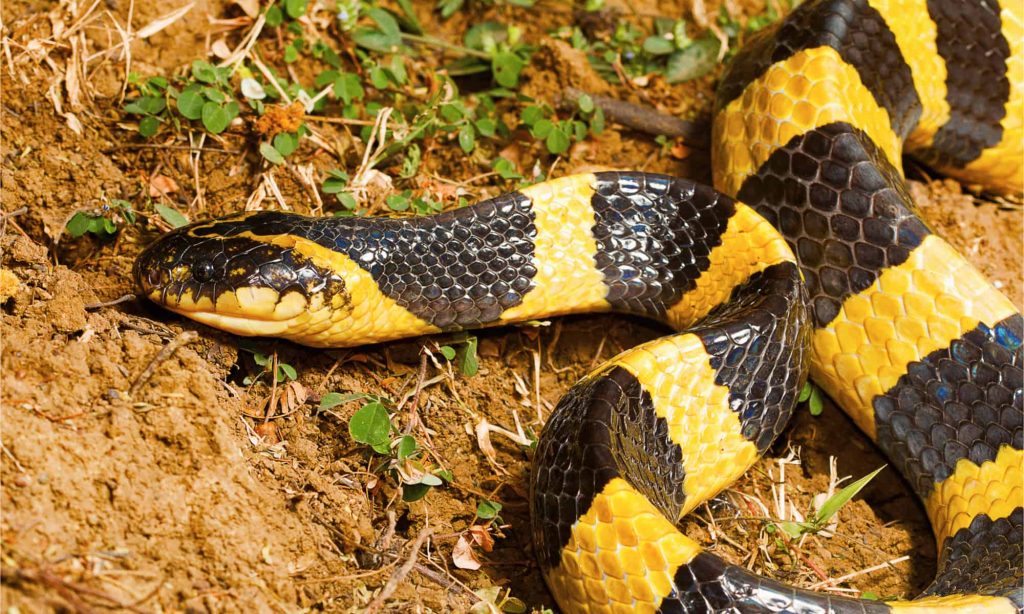
Location: South and Southeast Asia
Kraits are highly venomous snakes found in South and Southeast Asia. There are several species, such as the Indian Krait, that are notorious for their potent venom. Krait venom contains neurotoxins that can cause paralysis and respiratory failure. Despite their lethality, kraits are usually nocturnal and very shy, so they rarely pose a threat unless provoked. However, when bites occur, especially at night, they can be fatal without timely medical intervention.
9. Mamba (Dendroaspis spp.)
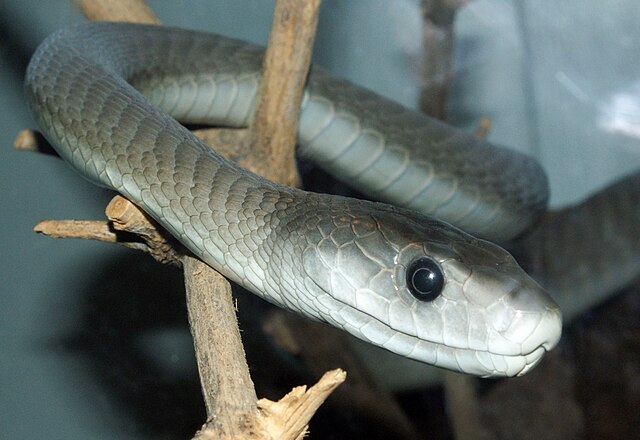
Location: Africa
While the Black Mamba is the most famous member of the Mamba family, other species, such as the Green Mamba, also carry potent venom. Mambas, in general, have incredibly fast strikes and highly toxic venom that acts on the nervous system. The Green Mamba, for instance, is highly aggressive and can strike rapidly. Its venom can cause paralysis and death through respiratory failure. Mambas are native to sub-Saharan Africa and are feared for their speed and lethal venom.
10. Viper (Vipera spp.)
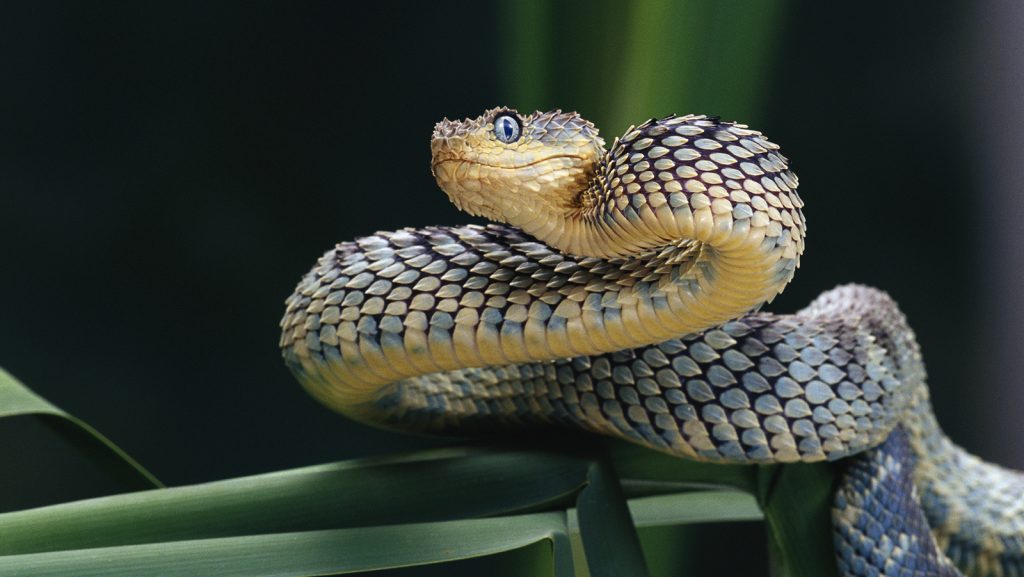
Location: Europe, Asia, and North Africa
Vipers are a large family of snakes, with some species known for their dangerous venom. One of the most notorious is the Eurasian Viper, whose venom contains hemotoxins that cause blood clotting and tissue destruction. Although most vipers are not as toxic as some of the other snakes on this list, certain species, such as the Russell’s Viper and the Saw-Scaled Viper, are responsible for many bites and fatalities in their regions. Their venom is deadly if not treated with antivenom and can cause severe blood loss and organ failure